Earth Science - Question & Answer docx.
VerifiedAdded on 2022/08/13
|6
|652
|28
AI Summary
Contribute Materials
Your contribution can guide someone’s learning journey. Share your
documents today.
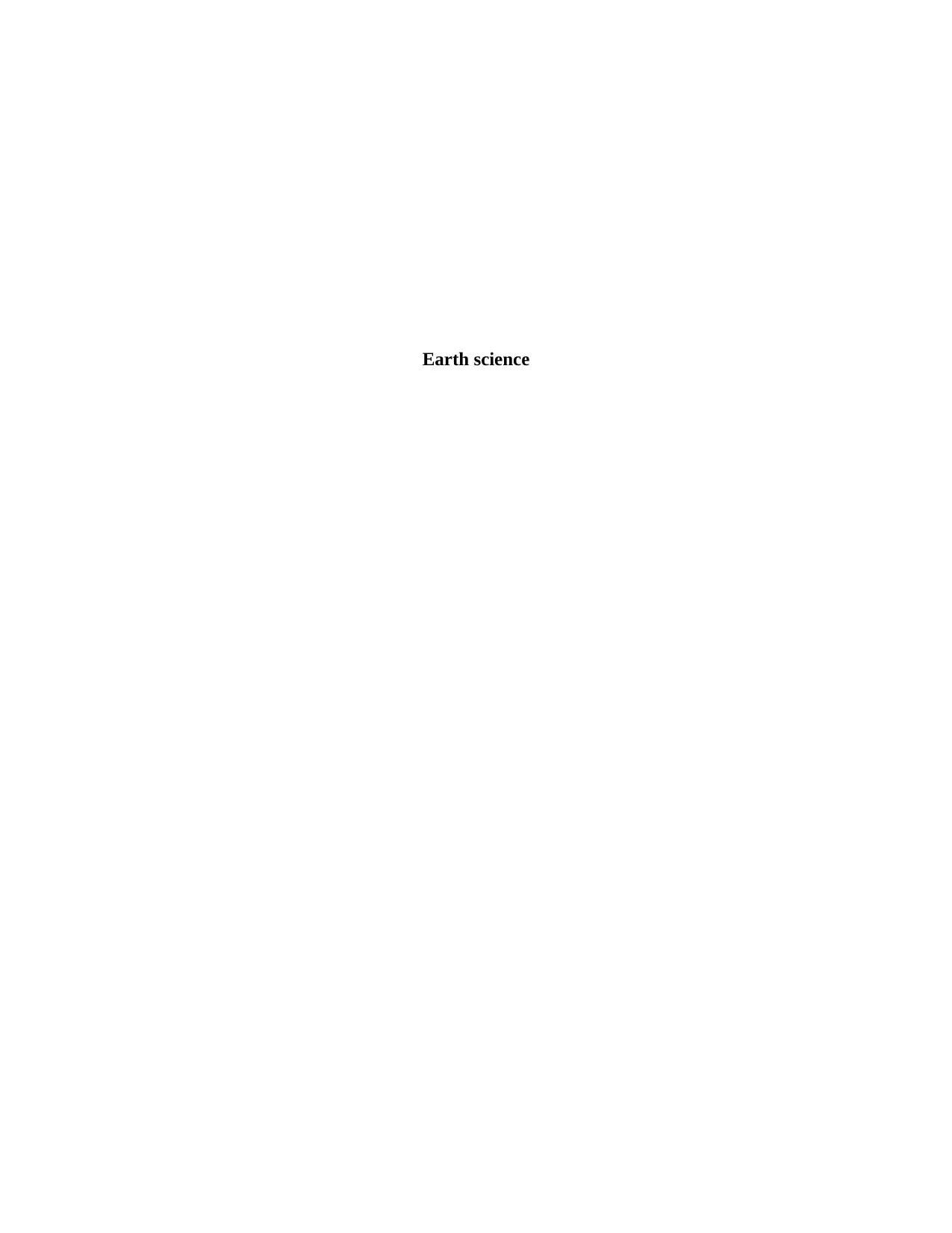
Earth science
Secure Best Marks with AI Grader
Need help grading? Try our AI Grader for instant feedback on your assignments.
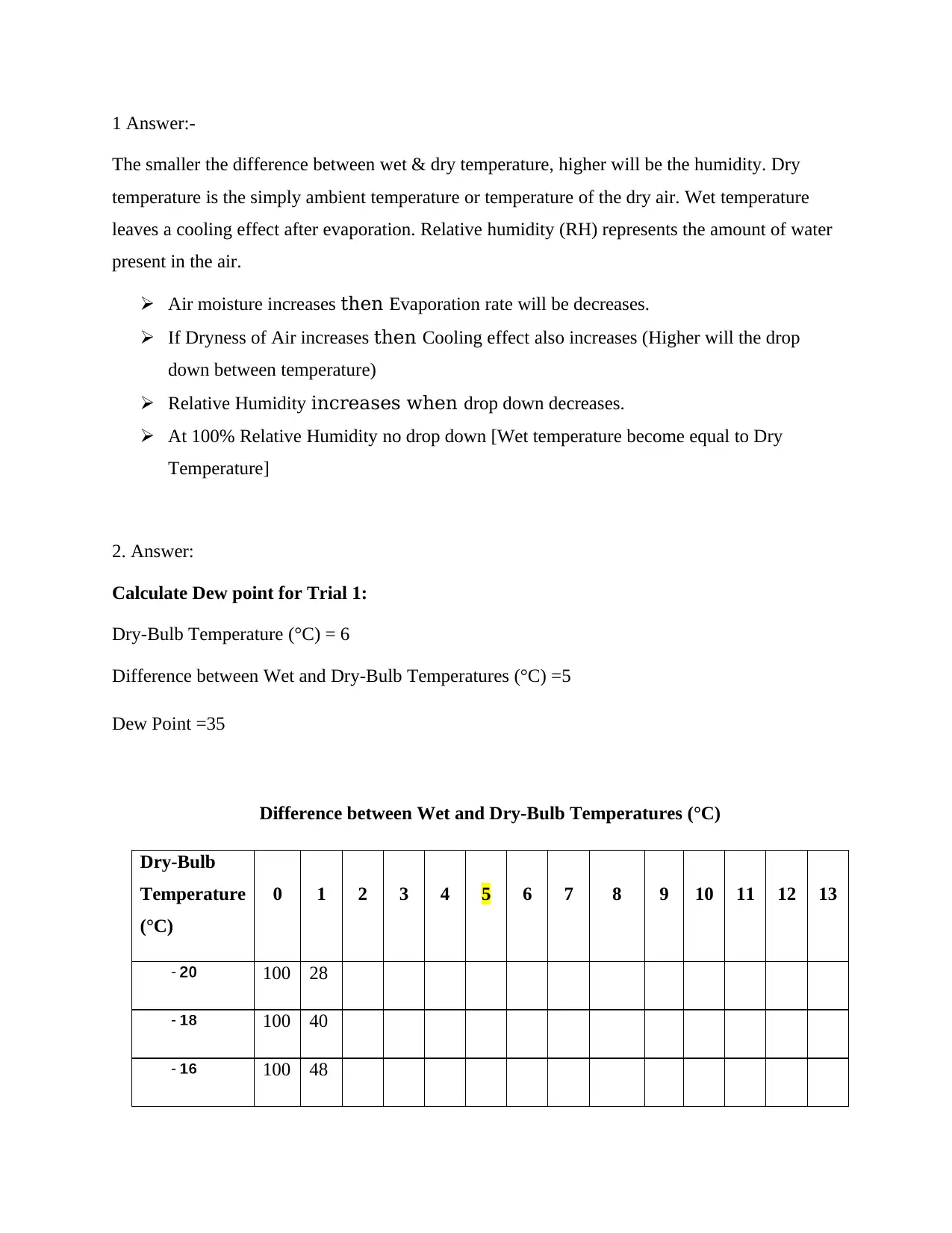
1 Answer:-
The smaller the difference between wet & dry temperature, higher will be the humidity. Dry
temperature is the simply ambient temperature or temperature of the dry air. Wet temperature
leaves a cooling effect after evaporation. Relative humidity (RH) represents the amount of water
present in the air.
Air moisture increases then Evaporation rate will be decreases.
If Dryness of Air increases then Cooling effect also increases (Higher will the drop
down between temperature)
Relative Humidity increases when drop down decreases.
At 100% Relative Humidity no drop down [Wet temperature become equal to Dry
Temperature]
2. Answer:
Calculate Dew point for Trial 1:
Dry-Bulb Temperature (°C) = 6
Difference between Wet and Dry-Bulb Temperatures (°C) =5
Dew Point =35
Difference between Wet and Dry-Bulb Temperatures (°C)
Dry-Bulb
Temperature
(°C)
0 1 2 3 4 5 6 7 8 9 10 11 12 13
100 28
100 40
100 48
The smaller the difference between wet & dry temperature, higher will be the humidity. Dry
temperature is the simply ambient temperature or temperature of the dry air. Wet temperature
leaves a cooling effect after evaporation. Relative humidity (RH) represents the amount of water
present in the air.
Air moisture increases then Evaporation rate will be decreases.
If Dryness of Air increases then Cooling effect also increases (Higher will the drop
down between temperature)
Relative Humidity increases when drop down decreases.
At 100% Relative Humidity no drop down [Wet temperature become equal to Dry
Temperature]
2. Answer:
Calculate Dew point for Trial 1:
Dry-Bulb Temperature (°C) = 6
Difference between Wet and Dry-Bulb Temperatures (°C) =5
Dew Point =35
Difference between Wet and Dry-Bulb Temperatures (°C)
Dry-Bulb
Temperature
(°C)
0 1 2 3 4 5 6 7 8 9 10 11 12 13
100 28
100 40
100 48
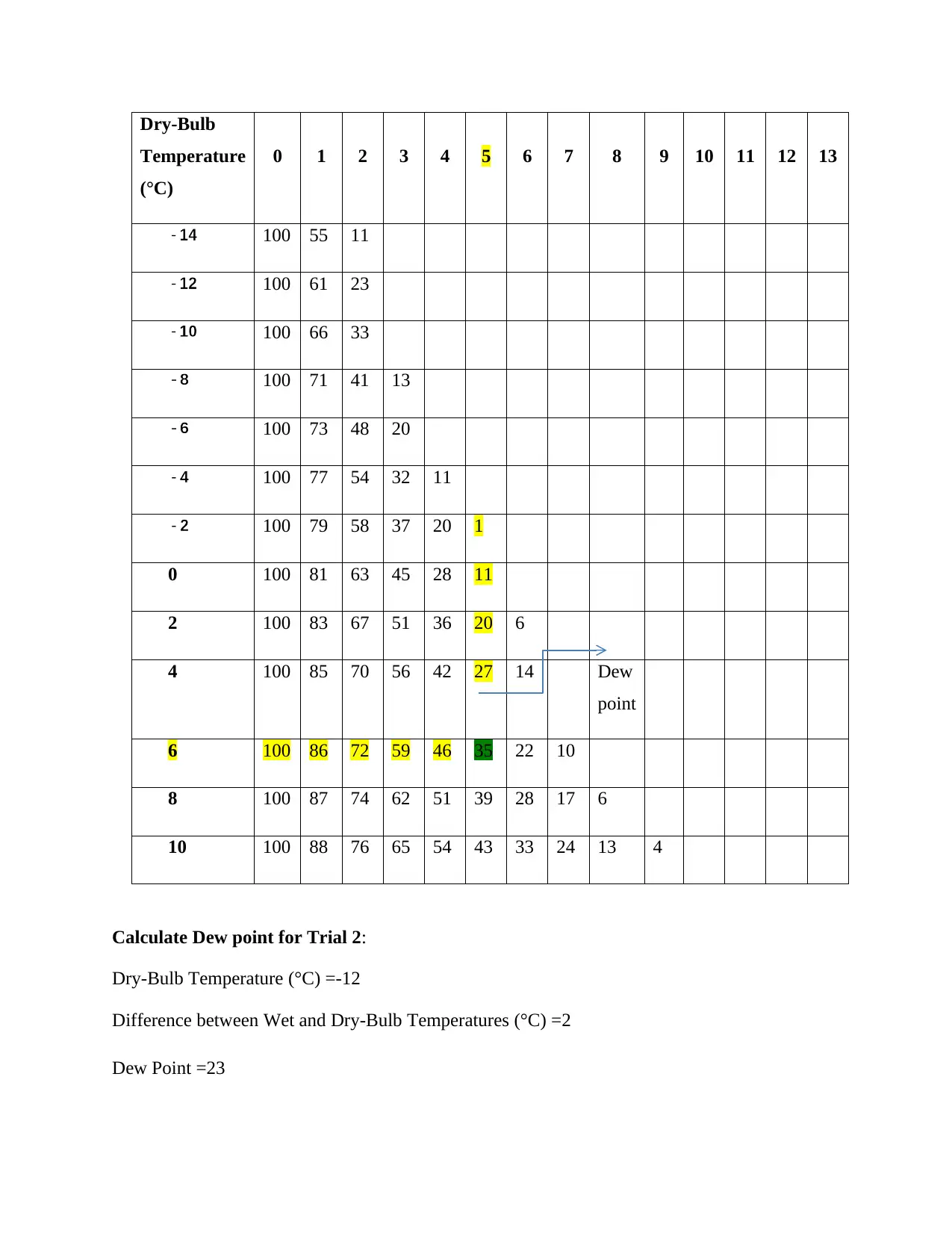
Dry-Bulb
Temperature
(°C)
0 1 2 3 4 5 6 7 8 9 10 11 12 13
100 55 11
100 61 23
100 66 33
100 71 41 13
100 73 48 20
100 77 54 32 11
100 79 58 37 20 1
0 100 81 63 45 28 11
2 100 83 67 51 36 20 6
4 100 85 70 56 42 27 14 Dew
point
6 100 86 72 59 46 35 22 10
8 100 87 74 62 51 39 28 17 6
10 100 88 76 65 54 43 33 24 13 4
Calculate Dew point for Trial 2:
Dry-Bulb Temperature (°C) =-12
Difference between Wet and Dry-Bulb Temperatures (°C) =2
Dew Point =23
Temperature
(°C)
0 1 2 3 4 5 6 7 8 9 10 11 12 13
100 55 11
100 61 23
100 66 33
100 71 41 13
100 73 48 20
100 77 54 32 11
100 79 58 37 20 1
0 100 81 63 45 28 11
2 100 83 67 51 36 20 6
4 100 85 70 56 42 27 14 Dew
point
6 100 86 72 59 46 35 22 10
8 100 87 74 62 51 39 28 17 6
10 100 88 76 65 54 43 33 24 13 4
Calculate Dew point for Trial 2:
Dry-Bulb Temperature (°C) =-12
Difference between Wet and Dry-Bulb Temperatures (°C) =2
Dew Point =23
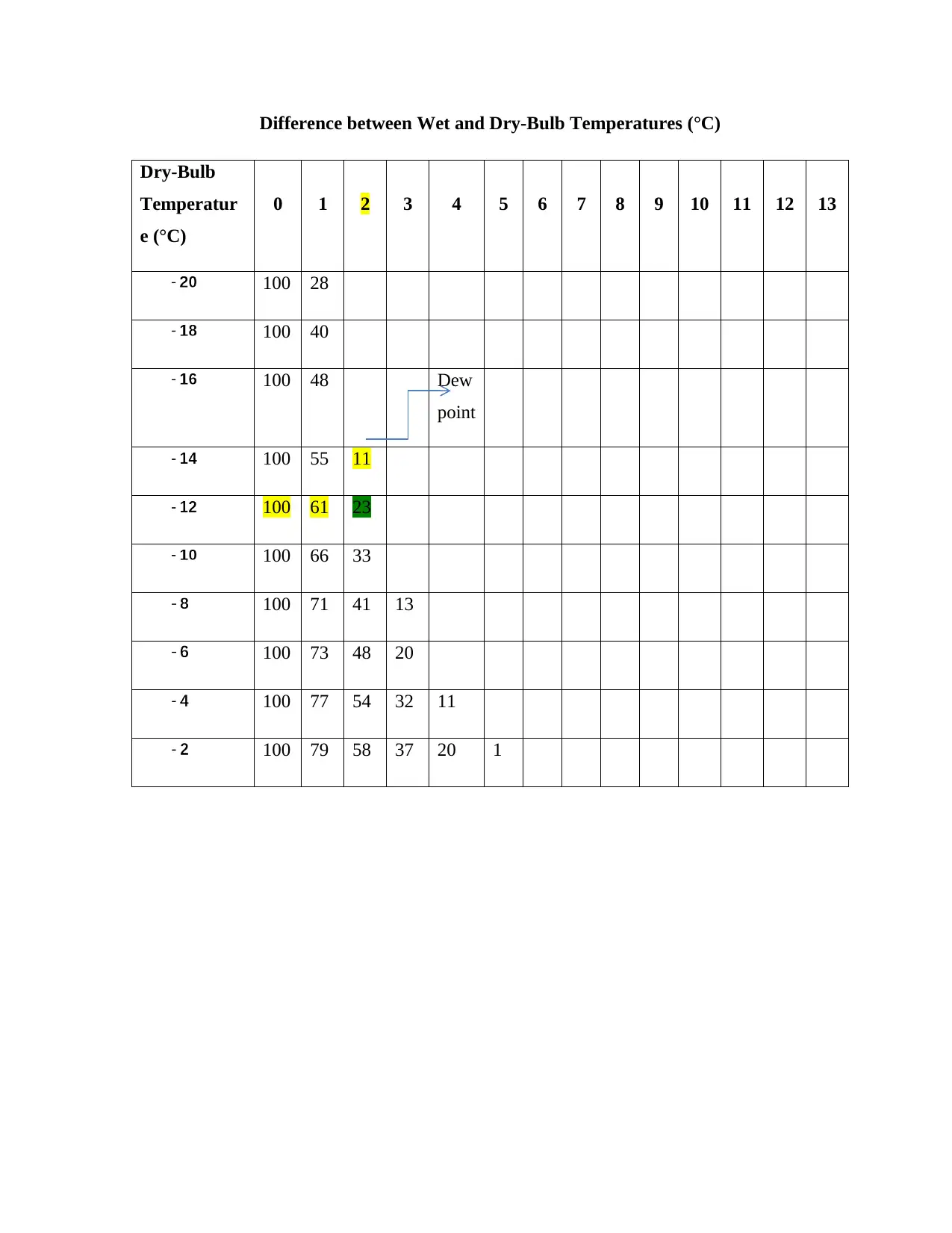
Difference between Wet and Dry-Bulb Temperatures (°C)
Dry-Bulb
Temperatur
e (°C)
0 1 2 3 4 5 6 7 8 9 10 11 12 13
100 28
100 40
100 48 Dew
point
100 55 11
100 61 23
100 66 33
100 71 41 13
100 73 48 20
100 77 54 32 11
100 79 58 37 20 1
Dry-Bulb
Temperatur
e (°C)
0 1 2 3 4 5 6 7 8 9 10 11 12 13
100 28
100 40
100 48 Dew
point
100 55 11
100 61 23
100 66 33
100 71 41 13
100 73 48 20
100 77 54 32 11
100 79 58 37 20 1
Secure Best Marks with AI Grader
Need help grading? Try our AI Grader for instant feedback on your assignments.
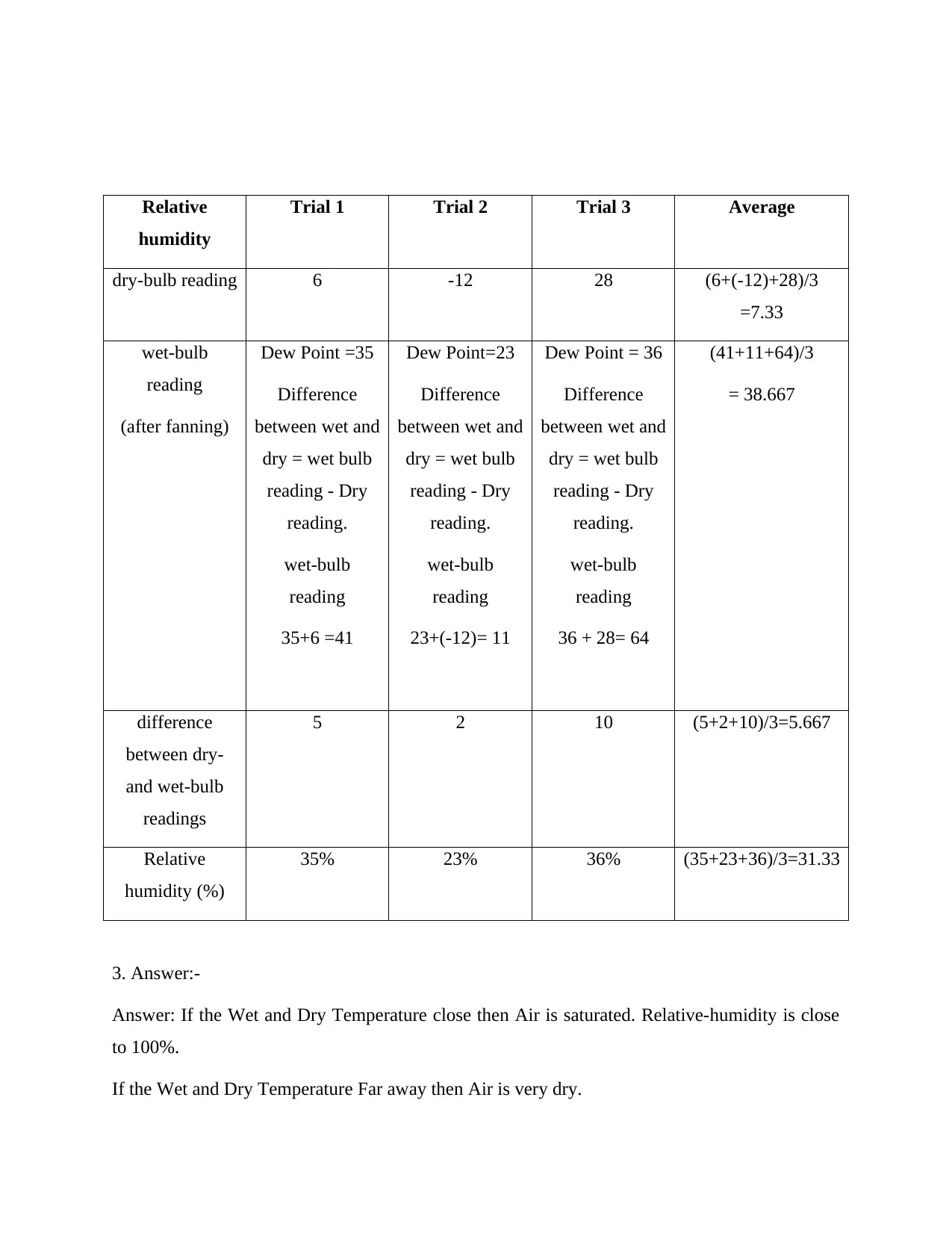
Relative
humidity
Trial 1 Trial 2 Trial 3 Average
dry-bulb reading 6 -12 28 (6+(-12)+28)/3
=7.33
wet-bulb
reading
(after fanning)
Dew Point =35
Difference
between wet and
dry = wet bulb
reading - Dry
reading.
wet-bulb
reading
35+6 =41
Dew Point=23
Difference
between wet and
dry = wet bulb
reading - Dry
reading.
wet-bulb
reading
23+(-12)= 11
Dew Point = 36
Difference
between wet and
dry = wet bulb
reading - Dry
reading.
wet-bulb
reading
36 + 28= 64
(41+11+64)/3
= 38.667
difference
between dry-
and wet-bulb
readings
5 2 10 (5+2+10)/3=5.667
Relative
humidity (%)
35% 23% 36% (35+23+36)/3=31.33
3. Answer:-
Answer: If the Wet and Dry Temperature close then Air is saturated. Relative-humidity is close
to 100%.
If the Wet and Dry Temperature Far away then Air is very dry.
humidity
Trial 1 Trial 2 Trial 3 Average
dry-bulb reading 6 -12 28 (6+(-12)+28)/3
=7.33
wet-bulb
reading
(after fanning)
Dew Point =35
Difference
between wet and
dry = wet bulb
reading - Dry
reading.
wet-bulb
reading
35+6 =41
Dew Point=23
Difference
between wet and
dry = wet bulb
reading - Dry
reading.
wet-bulb
reading
23+(-12)= 11
Dew Point = 36
Difference
between wet and
dry = wet bulb
reading - Dry
reading.
wet-bulb
reading
36 + 28= 64
(41+11+64)/3
= 38.667
difference
between dry-
and wet-bulb
readings
5 2 10 (5+2+10)/3=5.667
Relative
humidity (%)
35% 23% 36% (35+23+36)/3=31.33
3. Answer:-
Answer: If the Wet and Dry Temperature close then Air is saturated. Relative-humidity is close
to 100%.
If the Wet and Dry Temperature Far away then Air is very dry.
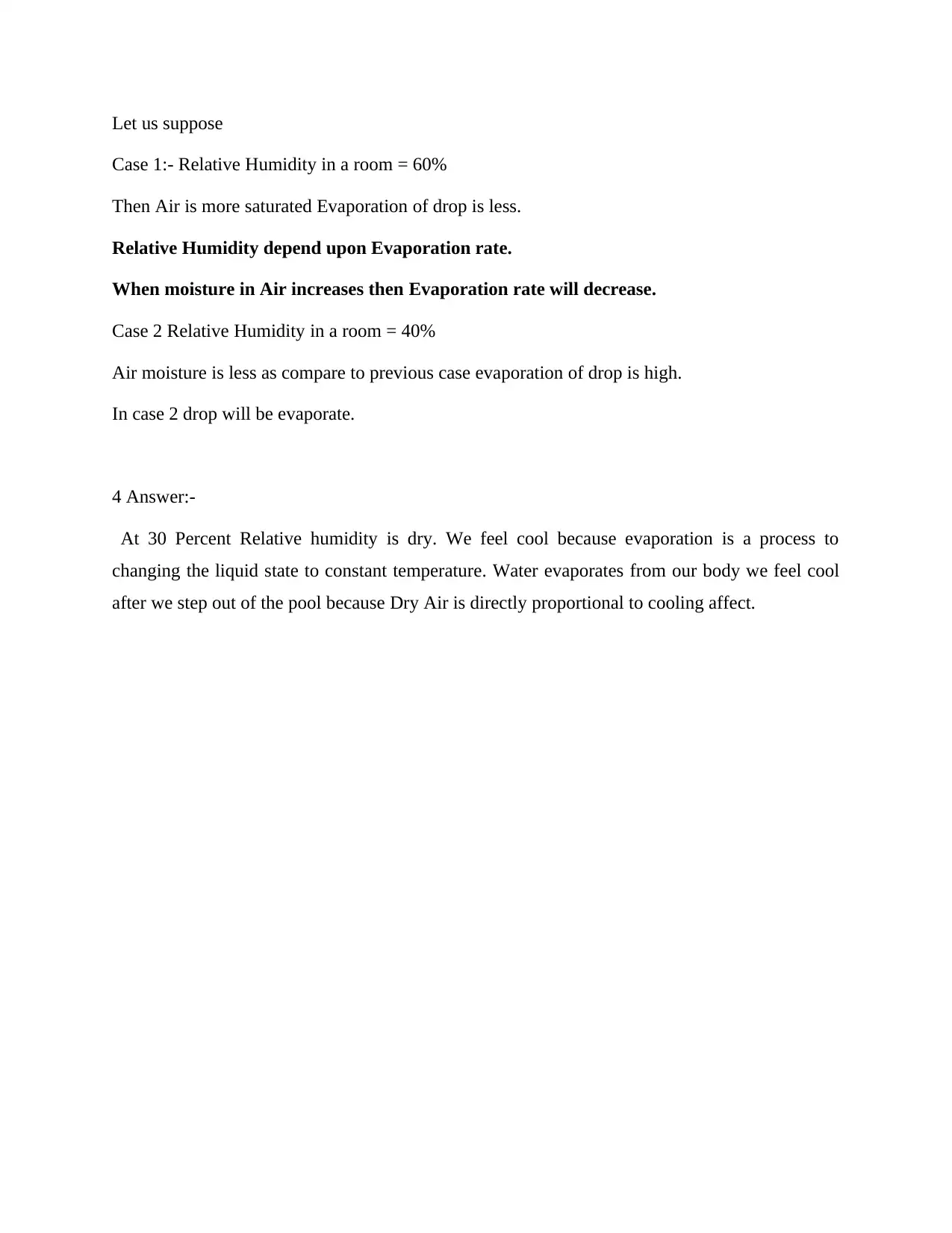
Let us suppose
Case 1:- Relative Humidity in a room = 60%
Then Air is more saturated Evaporation of drop is less.
Relative Humidity depend upon Evaporation rate.
When moisture in Air increases then Evaporation rate will decrease.
Case 2 Relative Humidity in a room = 40%
Air moisture is less as compare to previous case evaporation of drop is high.
In case 2 drop will be evaporate.
4 Answer:-
At 30 Percent Relative humidity is dry. We feel cool because evaporation is a process to
changing the liquid state to constant temperature. Water evaporates from our body we feel cool
after we step out of the pool because Dry Air is directly proportional to cooling affect.
Case 1:- Relative Humidity in a room = 60%
Then Air is more saturated Evaporation of drop is less.
Relative Humidity depend upon Evaporation rate.
When moisture in Air increases then Evaporation rate will decrease.
Case 2 Relative Humidity in a room = 40%
Air moisture is less as compare to previous case evaporation of drop is high.
In case 2 drop will be evaporate.
4 Answer:-
At 30 Percent Relative humidity is dry. We feel cool because evaporation is a process to
changing the liquid state to constant temperature. Water evaporates from our body we feel cool
after we step out of the pool because Dry Air is directly proportional to cooling affect.
1 out of 6
Your All-in-One AI-Powered Toolkit for Academic Success.
+13062052269
info@desklib.com
Available 24*7 on WhatsApp / Email
![[object Object]](/_next/static/media/star-bottom.7253800d.svg)
Unlock your academic potential
© 2024 | Zucol Services PVT LTD | All rights reserved.

